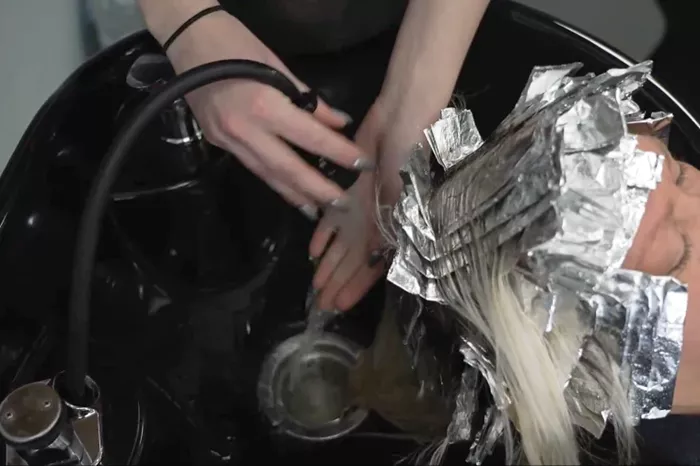Hector Corvera, a former hairstylist from California, is suing L’Oréal and 10 other prominent beauty companies over a potential link between repeated exposure to hair dye chemicals and his diagnosis of bladder cancer. The lawsuit, filed in Los Angeles last month, claims that Corvera’s cancer is a direct result of the carcinogenic chemicals found in the hair dyes he used throughout his 40-year career.
Born in California’s Central Valley to Mexican-American agricultural workers, Corvera entered the world of hairstyling after growing weary of the physical demands of farm labor. His career in the beauty industry seemed like a reprieve from the grueling work in the fields, offering cooler temperatures and steady employment. However, Corvera’s life took a tragic turn when he was diagnosed with bladder cancer in 2023. During his consultation with a urologist, the doctor’s remark—“Hmm, that explains it”—led Corvera to explore the potential link between his occupation and the illness. This prompted him to pursue legal action against the beauty companies that manufactured the hair dyes he used.
In the lawsuit, Corvera alleges that the beauty industry giants, including brands like Clairol, Wella, and Joico, knowingly included hazardous chemicals in their hair dyes. According to the complaint, these chemicals contributed directly to his cancer diagnosis. Represented by attorney Allen Smith, best known for his high-profile litigation against Johnson & Johnson regarding talcum powder and cancer risks, Corvera’s case highlights what he claims is the negligent conduct of the companies in the production and testing of their products.
“We’re not talking about chemicals in hair dyes that might be carcinogenic. These are known chemicals that cause cancer,” said Smith, who plans to represent others in similar cases.
Scientific studies dating back decades have found that hairstylists, who are frequently exposed to these chemicals, face an increased risk of developing cancer. Anne McTiernan, an epidemiologist at the Fred Hutchinson Cancer Center, noted, “Hair dyes are full of carcinogens,” adding that hairstylists are particularly vulnerable due to both inhalation and dermal exposure. The American Cancer Society has also found a consistent link between hairdressing and an increased risk of bladder cancer.
Studies have long suggested that certain chemicals found in hair dyes, particularly aromatic amines like 4-ABP, are carcinogenic. Research dating back to the 1970s identified these chemicals as potentially altering the genetic makeup of bacteria in lab experiments, raising concerns about their impact on human health. While the cosmetic industry made efforts to reformulate products in response, more recent research shows that harmful substances, including 4-ABP, remain in many commercial hair dyes.
In 2003, a study from the National Center for Toxicological Research highlighted 4-ABP in several commercial dyes, including popular salon and home products. This chemical, which has been linked to bladder and liver cancer, is no longer produced in the U.S. but still appears in some hair dye formulations.
Adana Llanos, an associate professor at Columbia University, expressed concern over the persistence of harmful chemicals in hair dyes, despite research pointing to their toxicity. “How is it that 4-ABP is still being found in modern-day hair dye? That chemical… should not be in products that people have easy access to,” she said.
Corvera’s case shines a light on the broader concerns surrounding hair dye safety, especially since many chemicals used in the products are not disclosed on the labels. The FDA does not require pre-market approval for cosmetics, leaving manufacturers responsible for ensuring the safety of their products. This lack of regulation has led to scrutiny over how much consumers truly know about the contents of the products they use.
Recent studies on the potential health risks of hair dye for general consumers, particularly women, have been inconclusive. While a 2020 study found an association between permanent hair dye use and an increased risk of breast cancer, especially among women of color, it did not establish a direct cause. Researchers noted that darker shades of dye, which require stronger chemicals, might contribute to heightened risks.
As for Corvera, his diagnosis has profoundly impacted his life. “It’s ruined my life. I’m not normal anymore, having to think of it every day, whether this is going to come back,” he said, speaking to the toll his illness has taken on his mental and emotional health.
The lawsuit’s impact may extend beyond Corvera, as it underscores the ongoing concerns surrounding the safety of personal care products and their long-term effects on health. The case continues to evolve as researchers and health professionals push for more transparency and regulation in the cosmetic industry.
Read more:
- FDA Issues Updated Recall For Madegood Granola Bars, Affecting Over 2.4 Million Cases
- Federal Funding Freeze Disrupts Rural Nonprofits In West Virginia
- CDC Report Reveals Evidence Of Past Bird Flu Infections In Asymptomatic Veterinarians


